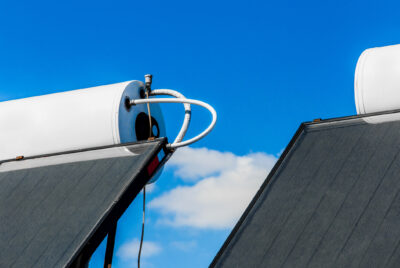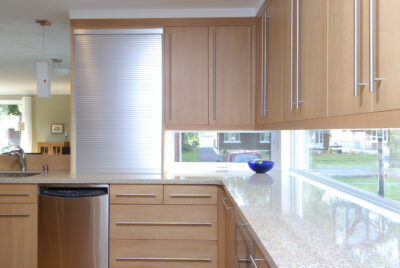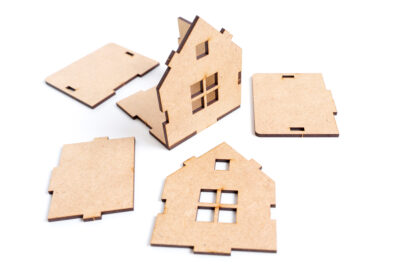Off-Grid Outhouse Design: 10 Tips to Achieve Beauty, Function, and Sustainability
Introduction: Importance of Off-Grid Living
Off-grid living is more than a lifestyle choice; it’s a commitment to sustainability, self-sufficiency, and a closer connection to nature. As we seek to reduce our environmental footprint and embrace more sustainable practices, designing functional and beautiful off-grid spaces becomes essential. One critical aspect of this is the off-grid outhouse or bathroom. This guide will provide you with ten essential tips to help you design an off-grid outhouse that is not only efficient and eco-friendly but also comfortable and aesthetically pleasing.
Tip 1: Location Selection
Designing an off-grid outhouse involves several considerations, but none is more important than selecting the perfect location. The right spot ensures your outhouse is both functional and pleasant to use. Let’s dive deeper into the factors you need to consider:
Proximity to Your Living Space
When choosing a location, think about how far you’re willing to walk, especially during adverse weather conditions. Here are a few points to keep in mind:
- Accessibility: The outhouse should be close enough to your main living space to be easily accessible at all times. During the night, in heavy rain, or snow, a long trek to the bathroom can be inconvenient and even hazardous.
- Odor Control: While proximity is important, so is maintaining a reasonable distance to avoid any unpleasant odors from wafting into your living area. A balance is needed to ensure convenience without compromising comfort.
Imagine waking up in the middle of a cold night and having a short, easy walk to your bathroom instead of trudging a long distance through snow or rain. A well-placed outhouse can make a significant difference in your off-grid living experience.
Drainage and Soil Type
The ground conditions where you place your outhouse are critical for its long-term usability and environmental impact:
- Good Drainage: Select a site with natural drainage to prevent water from pooling around the base of the outhouse. Waterlogged soil can lead to structural issues and make the area unpleasant and unsafe to use.
- Soil Composition: The type of soil is especially important if you’re using a composting toilet. Sandy or loamy soils are ideal as they aid in the natural decomposition process, whereas heavy clay soils can retain moisture and slow down decomposition.
Think about the foundation of your outhouse. Just like you wouldn’t build a house on a shaky foundation, ensuring your outhouse is on well-drained, suitable soil can prevent a host of problems down the line.
Sunlight and Wind
Environmental factors such as sunlight and wind play a significant role in the functionality and comfort of your outhouse:
- Sunlight: Position your outhouse where it can receive ample sunlight. Sunlight helps to naturally disinfect and dry out the area, reducing the risk of odors and mold. A bright, sunlit outhouse can also make it more pleasant to use during the day.
- Wind: A breezy location can be beneficial in naturally dispersing odors. However, ensure the wind flow doesn’t create drafts inside the outhouse. Proper ventilation combined with a strategic position can harness the benefits of wind without causing discomfort.
Imagine the fresh, dry feel of an outhouse that’s naturally ventilated and sunlit, versus a damp, dark space that lacks these natural benefits. By considering sunlight and wind, you can enhance both the hygiene and comfort of your outhouse.
Additional Considerations
In addition to these primary factors, here are a few more points to consider:
- Privacy: Ensure the location provides sufficient privacy, either through natural screening like trees and shrubs or by building enclosures around the outhouse.
- Pathways: Create a clear, stable path from your living space to the outhouse. This path should be easy to navigate in all weather conditions, possibly with stepping stones or gravel to prevent mud and slipping.
- Aesthetics: Consider the visual impact on your overall property. An outhouse should blend in with its surroundings, maintaining the natural beauty of your off-grid living space.
Imagine your outhouse seamlessly blending into the landscape, accessible via a charming pathway, and offering privacy without feeling isolated. The right location makes all the difference.
Tip 2: Sustainable Materials
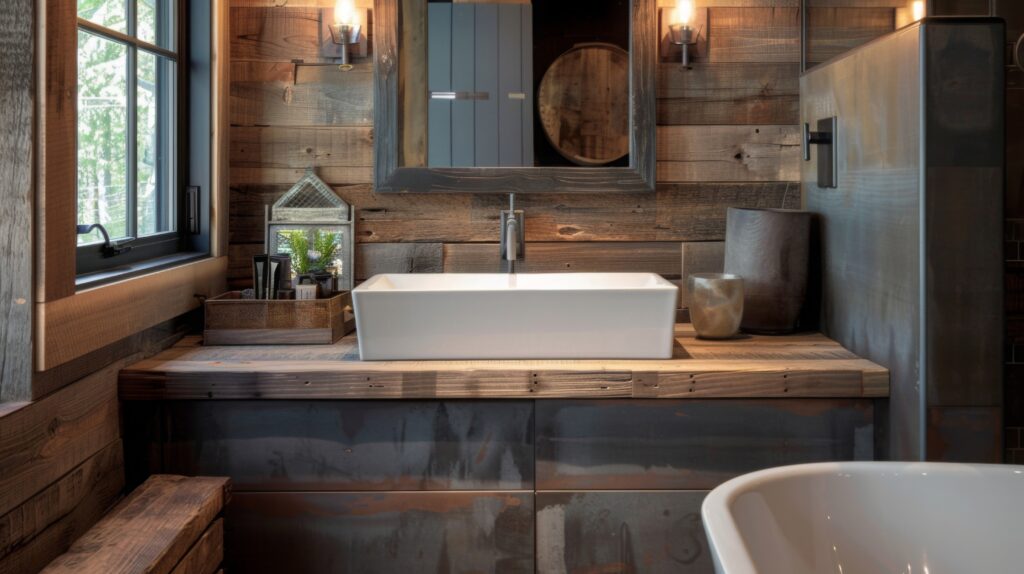
Constructing an off-grid outhouse is a unique opportunity to embrace sustainability and environmental stewardship. By selecting materials that are both eco-friendly and durable, you contribute to a healthier planet and create a structure that harmonizes with the natural landscape. Here are some materials to consider:
- Reclaimed wood: Gives a rustic charm and is environmentally friendly and very durable.
- Bamboo: A rapidly renewable resource that’s strong and lightweight. It’s natural appearance blends beautifully with the outdoor settings, giving your outhouse a sleek modern look.
- Recycled metal: Great for roofing and structural support as it’s strong and weather resistant. Recycling material saves energy compared to producing new metal, significantly reducing greenhouse gas emissions.
- Natural stone: Perfect for foundations and pathways. These pathways can prevent mud and erosion, making access easy and clean. It also blends into the surroundings, exuding timeless beauty.
Additional Sustainable Materials
Here are a few more sustainable materials to consider for various parts of your outhouse:
- Hempcrete: Made from hemp fibers, lime, and water, hempcrete is a sustainable building material that provides excellent insulation and is resistant to mold and pests.
- Recycled Glass: This can be used for decorative elements or even windows, adding a unique touch while promoting recycling.
- Eco-Friendly Paints and Finishes: Choose non-toxic, low-VOC (volatile organic compounds) paints and finishes to ensure your outhouse is safe for both the environment and its users.
Using these materials not only reduces your ecological footprint but also ensures that your outhouse blends seamlessly into the natural surroundings.
Tip 3: Composting Toilets vs. Regular Toilets
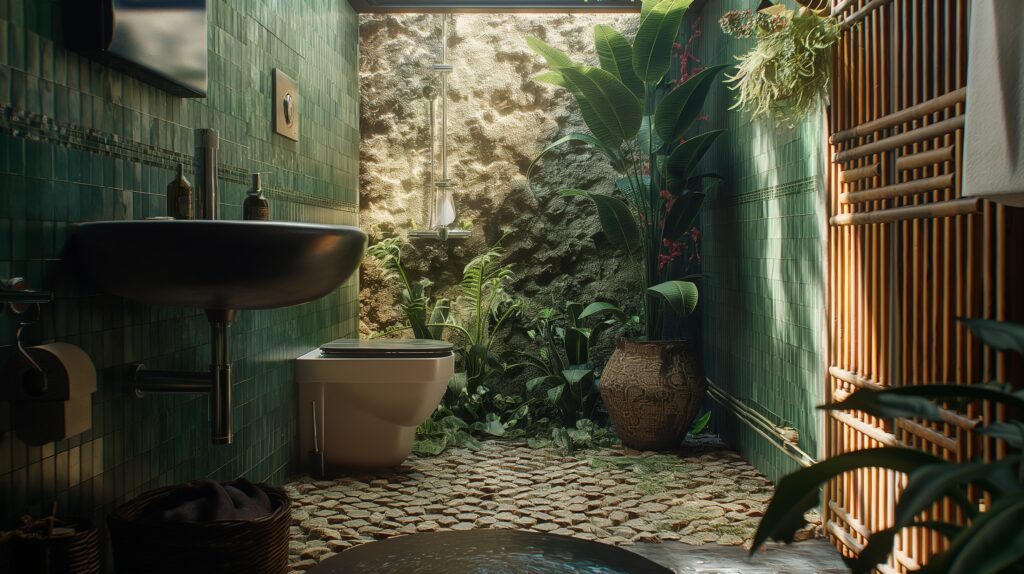
When designing an off-grid bathroom, choosing the right toilet system is a crucial decision. You generally have two main options: composting toilets and regular toilets. Each type has its own advantages and disadvantages, and your choice will significantly impact your off-grid living experience.
Composting Toilets
Composting toilets are an excellent option for off-grid living due to their sustainability and minimal resource requirements. Here’s a closer look at their benefits and considerations:
Eco-Friendly Waste Management
- Turning Waste into Compost: Composting toilets use aerobic decomposition to break down human waste into nutrient-rich compost. This process not only reduces waste but also produces a useful by-product that can enhance soil health.
- No Water Needed: These toilets do not require water for flushing, making them ideal for off-grid settings where water conservation is crucial. This feature helps preserve precious water resources and reduces the environmental impact.
- Reduces Pollution: By composting human waste, you minimize the pollution associated with traditional sewage systems, which often discharge harmful substances into water bodies.
Think of a composting toilet as a mini ecosystem. It efficiently recycles waste into a valuable resource, supporting the natural cycle of decomposition and nutrient reuse.
Practical Considerations
- Regular Maintenance: Composting toilets require regular maintenance to function effectively. This includes monitoring moisture levels, turning the compost, and occasionally removing finished compost.
- Odor Control: Proper ventilation is essential to control odors. Many composting toilets are designed with fans and vents to ensure adequate airflow, but it’s important to install and maintain these systems correctly.
- Initial Setup: Setting up a composting toilet may require a bit more planning and investment initially. You’ll need to consider the placement, ventilation, and possibly purchasing a composting system if you don’t build one yourself.
Regular Toilets
Regular toilets, or flush toilets, are more familiar to most people and can be used in off-grid settings under certain conditions. Let’s explore their characteristics:
Familiarity and Comfort
- Standard Use: Regular toilets provide the comfort and familiarity of a conventional bathroom experience. For many, this can be a significant advantage, especially if transitioning to off-grid living.
- Ease of Use: These toilets operate like those in a typical home, requiring no special maintenance routines apart from standard plumbing care.
Resource Intensive
- Water Usage: Regular toilets require a reliable and sustainable water source, as each flush consumes a significant amount of water. In off-grid settings, where water might be scarce or difficult to obtain, this can be a considerable drawback.
- Sewage System: A proper sewage system or septic tank is necessary to manage waste. Setting up and maintaining such systems off-grid can be challenging and costly.
Imagine a regular toilet as a familiar but resource-intensive option. While it might be easier to use, the sustainability and practicality of maintaining it off-grid are significant concerns.
Tip 4: Ventilation Strategies
Good ventilation is essential for any outhouse to prevent odors and ensure a pleasant environment. Here are some effective strategies:
- Windows: Install windows that can be opened to allow fresh air in and odors out.
- Vent pipes: A vent pipe from the toilet to above the roofline can help draw odors out.
- Solar-powered fans: These can improve air circulation without relying on the grid.
Imagine stepping into a well-ventilated outhouse where fresh air keeps the space inviting, rather than dreading a stuffy and smelly environment.
Tip 5: Natural Lighting Solutions
Natural lighting not only reduces energy consumption but also creates a welcoming and serene space. Consider these options:
- Skylights: Allow natural light to flood the space from above.
- Translucent roofing panels: These can provide a soft, diffused light.
- Strategic window placement: Place windows to maximize sunlight during the day.
Picture a bright, sunlit bathroom that feels open and connected to nature, enhancing your off-grid experience.
Tip 6: Water Conservation Techniques
Water conservation is critical in an off-grid setting where resources are limited and sustainability is a priority. Effective water management not only ensures that you have a reliable water supply but also reduces the environmental impact of your off-grid living. Here are some practical tips to minimize water usage in your off-grid bathroom:
Low-Flow Fixtures
Low-flow fixtures are a simple yet effective way to reduce water consumption without sacrificing comfort. These fixtures are designed to minimize the amount of water used in showers, faucets, and toilets.
- Low-Flow Faucets: These faucets aerate the water, mixing it with air to reduce flow without diminishing water pressure. This can significantly cut down on water usage in sinks.Low-Flow Showerheads: By restricting the flow of water while maintaining adequate pressure, low-flow showerheads can save gallons of water during each shower. Look for models that offer a satisfying shower experience with minimal water use.
- These toilets offer two flush options: a low-volume flush for liquid waste and a higher-volume flush for solid waste. This dual system conserves water by allowing users to choose the appropriate flush volume.
Imagine starting your day with a refreshing shower that uses only a fraction of the water of a conventional showerhead. Every drop is used efficiently, contributing to a more sustainable lifestyle.
Rainwater Harvesting
Rainwater harvesting is an excellent method to supplement your water supply. This technique involves collecting and storing rainwater for various uses, including bathroom needs.
- Collection Systems: Install gutters and downspouts to direct rainwater from your roof into storage tanks or barrels. Ensure the collection surfaces are clean and made of safe materials to prevent contamination.
- Storage Tanks: Use large storage tanks to hold the harvested rainwater. These tanks should be covered to prevent evaporation and keep debris and pests out.
- Filtration: Before using rainwater in your bathroom, it’s important to filter it to remove any impurities. Simple filtration systems can make the water suitable for tasks such as toilet flushing, washing, and even bathing if adequately filtered and treated.
Imagine the satisfaction of knowing that every time it rains, you’re capturing and utilizing this natural resource, reducing your dependence on external water supplies.
Greywater Systems
Greywater systems offer a sustainable way to recycle water from sinks, showers, and laundry for use in toilets or garden irrigation. Greywater is gently used water that, after minimal treatment, can be safely reused.
- Collection: Install a greywater collection system that diverts water from sinks, showers, and laundry to a greywater tank. Ensure that soaps and detergents used are biodegradable to prevent harm to plants and soil.
- Filtration and Treatment: Depending on the intended reuse, greywater may need basic filtration to remove particles and impurities. For irrigation, minimal treatment is usually sufficient.
- Distribution: Use the treated greywater for flushing toilets or irrigating gardens. This reduces the demand on your primary water supply and helps conserve fresh water for drinking and cooking.
Imagine a bathroom where the water from your morning hand wash or shower is collected, treated, and reused to flush your toilet or water your garden. This efficient system maximizes the utility of every drop of water.
Tip 7: Insulation Tips
Proper insulation is key to maintaining a comfortable temperature in your outhouse, especially if you live in a region with extreme weather. Here are some insulation tips:
- Natural materials: Use materials like wool, straw bales, or recycled denim for eco-friendly insulation.
- Double walls: Construct double walls with an insulating layer in between.
- Weather stripping: Ensure doors and windows are well-sealed to prevent drafts.
Think of insulation as wrapping your bathroom in a cozy blanket, keeping it warm in the winter and cool in the summer.
Tip 8: Incorporating Solar Power
Solar power is a fantastic way to provide energy for your off-grid outhouse without relying on traditional power sources. Here’s how to incorporate it:
- Solar panels: Install solar panels to power lights, fans, and small appliances.
- Solar water heaters: Use solar energy to heat water for showers and sinks. Click here For a step by step guide on how to use solar power to heat rainwater for off-grid faucets and shower heads
- Solar lights: Use solar-powered lights for nighttime illumination.
Imagine enjoying a hot shower heated by the sun or having bright lights at night without ever paying an electric bill.
Tip 9: Designing for Comfort
Comfort is essential in any bathroom, including an off-grid outhouse. Here are some tips to enhance comfort:
- Seating: Provide comfortable seating options, like padded toilet seats.
- Heating: Install a small, energy-efficient heater for cold weather.
- Aesthetics: Decorate with natural elements, such as plants and wood finishes, to create a relaxing atmosphere.
Think of your outhouse as a sanctuary, a place where you can relax and unwind, even in the middle of nature. Just because it’s an outhouse, it doesn’t mean that it can’t be elegant and inviting. As an interior designer, I’ve designed many award winning bathrooms, using beautiful high end materials and fixtures. I’m not suggesting that the use of high-end materials be used in an outhouse but the same amount of care and attention to aesthetics can transform this space into something inviting – an oasis of sorts
Tip 10: Maintenance Tips
Maintaining your off-grid outhouse is crucial to ensure it remains functional and pleasant. Here are some maintenance tips:
- Regular cleaning: Keep the space clean and hygienic with regular cleaning.
- Compost management: If using a composting toilet, manage the compost regularly to prevent odors and ensure proper decomposition.
- Check systems: Regularly inspect plumbing, ventilation, and insulation systems for any issues.
Imagine the peace of mind that comes with knowing your outhouse is always in top condition, ready for use whenever you need it.
Conclusion:
Designing an off-grid outhouse can be a rewarding project that enhances your off-grid living experience. By following these ten essential tips—selecting the right location, using sustainable materials, choosing the best toilet system, ensuring good ventilation, incorporating natural lighting, conserving water, insulating effectively, using solar power, designing for comfort, and maintaining your outhouse—you can create a functional, beautiful, and eco-friendly bathroom.
FAQs
1.What are the main benefits of an off-grid outhouse?
Off-grid outhouses offer several key benefits that make them an attractive option for sustainable living:
- Environmental Friendliness: Off-grid outhouses typically use composting toilets, which recycle human waste into compost that can be used to enrich soil. This process is eco-friendly, reducing the environmental impact compared to conventional sewage systems.
- Reduced Reliance on Municipal Utilities: By using an off-grid outhouse, you reduce or eliminate dependence on municipal water and sewage systems. This independence can be particularly beneficial in remote areas where access to these utilities is limited or non-existent.
- Seamless Integration with Natural Surroundings: Off-grid outhouses can be designed using natural and reclaimed materials, allowing them to blend in with the surrounding environment. This not only enhances aesthetic appeal but also minimizes the ecological footprint of the structure.
2. How do composting toilets work?
Composting toilets are a sustainable alternative to traditional flush toilets, especially suited for off-grid living. Here’s how they work:
- Aerobic Decomposition: Composting toilets use aerobic decomposition, a natural process where bacteria and other microorganisms break down human waste into compost. This process requires oxygen, which is supplied through proper ventilation.
- Separation of Liquids and Solids: Many composting toilets separate liquid waste from solid waste. Liquids can be evaporated or treated separately, while solids are decomposed into compost.
- Addition of Bulking Agents: To aid the composting process, materials like sawdust, peat moss, or coconut coir are often added to the toilet. These bulking agents help absorb moisture, promote aeration, and reduce odors.
- Regular Maintenance: Composting toilets require periodic maintenance, including adding bulking agents, mixing the compost, and removing finished compost. Proper maintenance ensures efficient operation and odor control.
- Think of a composting toilet as a mini eco-system that transforms waste into a valuable resource, reducing water usage and contributing to soil health.
3. Can I use regular plumbing in an off-grid outhouse?
Regular plumbing can be used in an off-grid outhouse, but it comes with several considerations and challenges:
- Sustainable Water Source: You need a reliable and sustainable source of water, such as rainwater harvesting or a well. Managing water usage becomes critical to ensure the supply lasts.
- Sewage System: A proper sewage system is necessary to handle wastewater. This could involve installing a septic tank, which requires regular maintenance and proper siting to avoid contamination of water sources.
- Energy Requirements: If using pumps or other powered equipment, you’ll need a renewable energy source, such as solar panels, to operate them. This adds complexity and cost to the system.
While regular plumbing offers familiarity and convenience, managing it sustainably off-grid requires careful planning and resource management.
4. Can I heat harvested rainwater to use with my faucets and shower even if off-grid?
- Solar Water Heating Systems: Yes, you can use solar water heating systems to heat harvested rainwater. These systems use solar collectors, typically installed on your roof, to absorb sunlight and convert it into heat. The heated water is then stored in an insulated tank, ready for use in your faucets and shower. Solar water heating is highly efficient and sustainable, making it an excellent choice for off-grid living.
- Wood-Burning Water Heaters: Another option is wood-burning water heaters. These heaters use wood as a fuel source to heat water, which can be ideal for off-grid locations where wood is readily available. This method provides a reliable source of hot water, especially in regions with less sunlight during certain seasons. Combining this with proper insulation ensures that your harvested rainwater stays warm for extended periods.
- Propane Water Heaters: Propane water heaters are also a viable option for heating harvested rainwater off-grid. These heaters run on propane gas, which can be stored in tanks on your property. Propane water heaters are efficient and can quickly heat water, providing a consistent supply of hot water for your faucets and shower. They are particularly useful in areas where solar energy or wood might not be sufficient year-round.
5. How do I ensure my off-grid outhouse remains odor-free?
Keeping your off-grid outhouse odor-free involves a combination of proper design, maintenance, and ventilation:
- Good Ventilation: Ensure your outhouse has adequate ventilation to allow fresh air to circulate and carry odors away. Installing vents or using a small fan powered by solar energy can help improve air flow.
- Regular Maintenance of Composting Toilets: Composting toilets need regular maintenance to function effectively. This includes adding bulking agents, mixing the compost to introduce air, and removing finished compost periodically.
- Proper Cleaning: Regularly clean the outhouse to prevent the build-up of odors. Use natural cleaning agents to avoid harming the composting process or the environment.
- Use of Odor-Absorbing Materials: Adding materials like activated charcoal or baking soda can help absorb and neutralize odors within the composting toilet.
By following these practices, you can ensure that your off-grid outhouse remains a pleasant and functional space, free from unpleasant odors.
Conclusion
Building and maintaining an off-grid outhouse offers a unique opportunity to live sustainably and harmoniously with nature. By understanding the benefits, functionality, and maintenance of off-grid outhouses, you can create a comfortable, eco-friendly bathroom that enhances your off-grid living experience. Embrace sustainable materials, effective water conservation strategies, and regular upkeep to ensure your outhouse remains a pleasant and efficient addition to your off-grid home.


